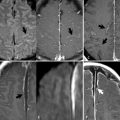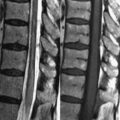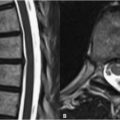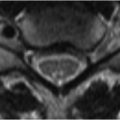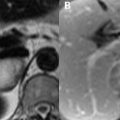13 Ischemia and Infarction I Cerebrovascular disease is the most common neurologic disease encountered by the practicing radiologist. Diffusion-weighted MRI (DWI) demonstrates a high sensitivity for ischemia within 15 to 30 minutes of symptom onset. DWI exploits the differences in the diffusibility of intra- and extracellular water. The lack of availability of adenosine triphosphate (i.e., ATP) in ischemic tissue results in the failure of sodium– potassium exchange pumps. Pump failure results in increased intracellular sodium and thus water. This increase in intracellular water without an increase in overall tissue water is known as cytotoxic edema. Intracellular water is relatively restricted in its diffusion by the cell membrane and intracellular organelles, and this restriction is visualized as high SI on DWI scans. Although DWI is sensitive for the detection of cytotoxic edema, it is also a T2WI. An area of increased SI on DWI may represent either pure restriction of diffusion or additional components of increased SI from its T2-weighted component (“T2 shine through”). Thus an area of high SI on DWI must be correlated with an ADC map on which a true diffusion restriction appears as low SI. In the absence of DWI abnormality, ADC maps need not be examined. DWI detects brain ischemia much earlier than FLAIR or T2WI on which ischemia is visualized commonly after 6 hours and almost uniformly after 24 hours of symptom onset. These sequences detect the vasogenic edema present in later stages of brain ischemia. Vasogenic edema occurs when edematous cells lyse and vascular endothelium is destroyed, resulting in the release of water into the extracellular space. Increasing extracellular edema may lead to mass effect and compression of adjacent vessels, thus extending the original infarct. FLAIR images, in which CSF SI is suppressed, are preferred over conventional T2WI for the visualization of vasogenic edema, particularly in periventricular and sulcal locations. Strokes may be characterized by timeframe as hyperacute, acute, subacute, and chronic. Hyperacute strokes are defined as being <6 hours after symptom onset. Although these may not be commonly seen clinically due to delays in patient presentation, the detection of hyperacute strokes is essential as IV thrombolytic intervention is often utilized within 3 hours of ischemic insult. As demonstrated in Fig. 13.1A, a hyperacute stroke is not accompanied by SI changes on T2WI or FLAIR (illustrated) scans. DWI, however, clearly demonstrates a hyperacute stroke as an area of high SI (Fig. 13.1B, arrow
![]()
Stay updated, free articles. Join our Telegram channel

Full access? Get Clinical Tree


